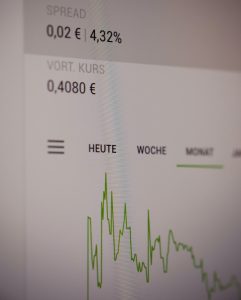Forex trading is a popular investment option for many people around the world. It allows individuals to trade currencies from different countries and make profit from the fluctuations in their exchange rates. One of the key factors that traders need to consider when trading forex is the spread. The spread is the difference between the bid and ask price of a currency pair. A high spread can have a significant impact on a trader’s profitability, so it is important to understand what is considered a high spread in forex.
Firstly, it is important to understand that the spread can vary depending on the currency pair being traded and the broker being used. Some currency pairs have naturally higher spreads due to their liquidity, volatility, and trading volume. For example, exotic currency pairs that are not frequently traded may have wider spreads than major currency pairs like EUR/USD and USD/JPY. Additionally, different brokers may offer different spreads due to their pricing models and commission fees.
Generally speaking, a spread of 1-2 pips is considered low, while a spread of 3-5 pips is considered average. A spread of 6 pips or more is considered high. However, it is important to note that what is considered high or low can vary depending on the trader’s strategy and risk tolerance. For example, a scalper who trades frequently and aims to make small profits from short-term price movements may prefer a low spread, while a swing trader who holds positions for longer periods may be willing to tolerate a higher spread in exchange for a more stable trading environment.
High spreads can have a number of negative effects on a trader’s profitability. Firstly, a high spread means that the trader needs to make a larger profit in order to break even. For example, if the spread on a currency pair is 5 pips and the trader wants to make a profit of 10 pips, they will need to make a profit of 15 pips in total to cover the spread and make a profit. This can make it more difficult for traders to achieve their profit targets and can lead to smaller profits overall.
High spreads can also increase the cost of trading. Many brokers charge a commission or markup on the spread, which means that a higher spread can result in higher trading costs for the trader. This can be particularly problematic for traders who trade frequently or use high leverage, as the costs can quickly add up and eat into their profits.
In addition, high spreads can increase the risk of slippage. Slippage occurs when a trader’s order is executed at a different price than the one they intended due to market volatility or liquidity issues. This can be particularly problematic for traders who use stop-loss orders, as a wider spread means that the stop-loss order may be triggered at a less favorable price, resulting in a larger loss.
Overall, a high spread is considered to be anything above 6 pips. While what is considered high or low can vary depending on the trader’s strategy and risk tolerance, high spreads can have a number of negative effects on a trader’s profitability and should be avoided where possible. Traders should carefully consider the spreads offered by different brokers and currency pairs when selecting their trading platform and strategy, and should aim to minimize their trading costs in order to maximize their profits.






